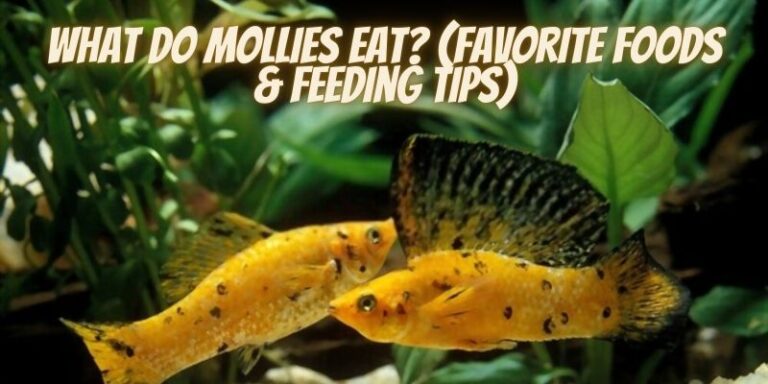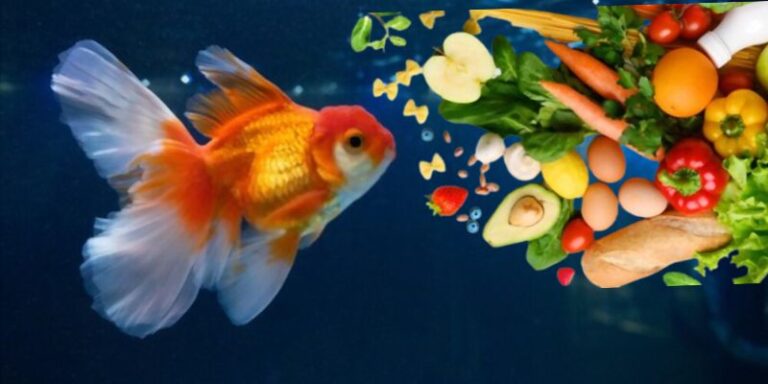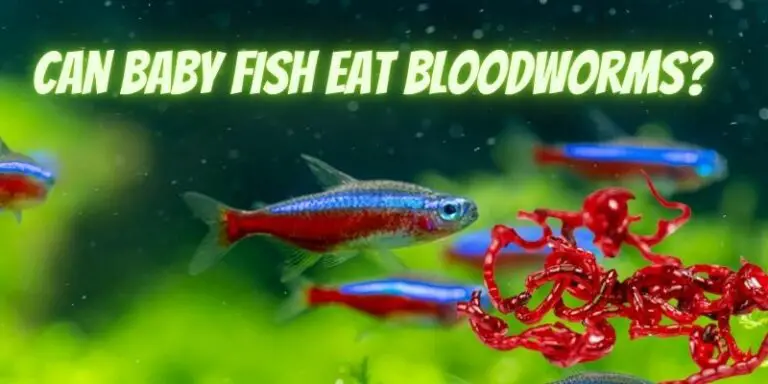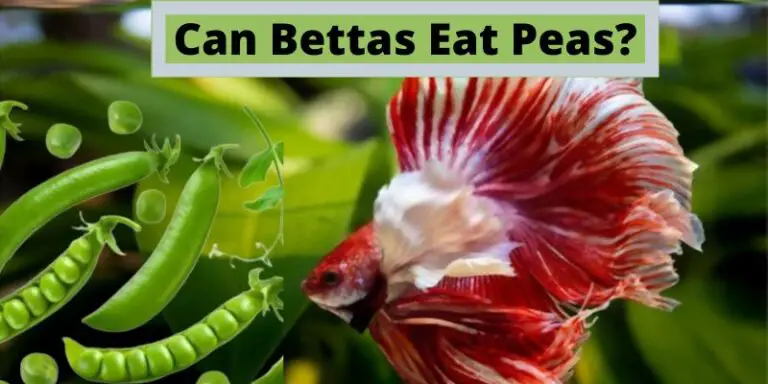Can Goldfish Eat Vegetables? (Dangerous or Safe?)
Goldfish eat various foods, including snails, aquatic insects, larvae, aquatic plants, algae, worms, detritus, brine shrimp, and many more, but many people have the question, can goldfish eat vegetables?
Yes, goldfish can eat vegetables due to their behavior of eating vegetables and non-veg. By eating veggies, they get good nutrition, which keeps their health and boosts their immune system and growth.
Are Vegetables Safe For Goldfish?
Yes, vegetables are safe for goldfish to eat. Moreover, goldfish are omnivores. Their diet consists of both vegetarian and nonvegetarian meals. Goldfish will eat most foods, but it is best to provide them with a varied diet.
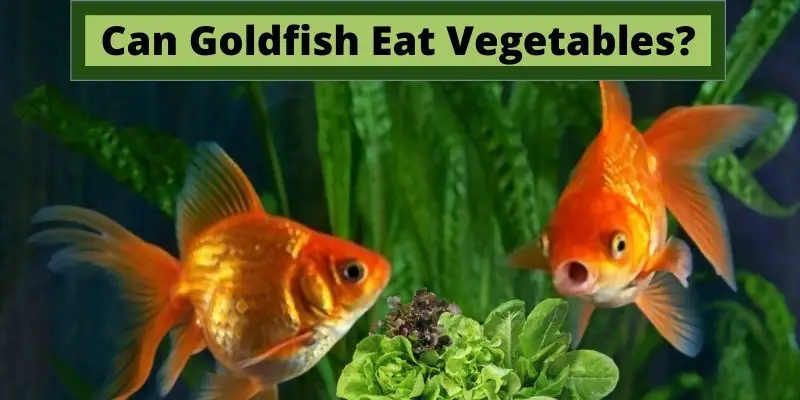
This keeps their digestive tract healthy and the goldfish happy. A good combination of foods includes flakes, pellets, vegetables, and live food.
They eat aquatic plants, algae, and other plants in the wild to supplement their vegetarian diet. Also, goldfish consume aquatic insects, small crustaceans, tadpoles, and occasionally smaller fish.
Vegetables are essential parts of your goldfish’s diet. They contain a lot of nutrients and are low in fat.
You can feed goldfish a variety of vegetables, including peas, lettuce, broccoli, baby marrow, and cauliflower.
Benefits of Feeding Vegetables To Goldfish
Vegetables are a great food for goldfish to intake. Without confusion or concern, offer them vegetables.
Besides their high nutritional value, vegetables are preferred in the goldfish diet due to their anti-bacterial and anti-inflammatory properties.
Vegetables also support healthy immune systems, organ development, and growth. These are essential for their nutritional value and because the goldfish benefits from their high fiber content, which prevents constipation.
Make sure to prepare the vegetables properly before giving them to the goldfish. Remember that if done incorrectly, it could have negative consequences.
How To Feed Different Vegetables To Goldfish?
It’s fair to assume that goldfish get much of their nutrition from pellets or flakes but also require fiber from fresh fruit and vegetables. Choose a variety of vegetables and thoroughly wash them.
Then if required, peel off the outer skin. If they’re still soft, then chop them and serve them to the goldfish.
If the fruits and vegetables are hard to consume, cook or boil them until they are soft enough to consume finely. The method of serving different vegetables to goldfish is explained below.
Carrot
Carrots are an excellent source of nutrition for goldfish. Here is the guide for feeding carrots to goldfish.
- Wash properly with water and peel off the skin.
- Cut them into tiny pieces and boil them until soft.
- Feed the carrot to goldfish fish in pallet-sized pieces. You can boil the carrots for 1 to 2 minutes if you cut them into tiny pieces.
Lettuce
Lettuce is safe to eat for goldfish. Before feeding lettuce, Peel the lettuce’s skin after washing it, then slice it into small pieces.
Although, you can feed your goldfish raw lettuce. If you are worried about the softness, boil it for some time and feed it to the fish.
Cucumber
Cucumber is fine to feed goldfish and is high in vitamin C and K, which are beneficial for fish health.
Before serving cucumber to goldfish, Wash the cucumber properly before removing the skin. Then cut them into tiny pieces after removing the seeds.
Depending on the fish, you can feed them raw or boiled cucumber. While some fish prefer raw cucumbers, others prefer boiled ones. To determine which type your goldfish prefers, try both.
Spinach
Spinach is also fine to feed goldfish. Iron and fiber, both present in spinach, are excellent nutrients for your goldfish.
Except for peas, which are seeds, spinach is thought to be the best vegetable to feed fish. You can feed spinach to your fish in three different ways.
- After carefully washing the spinach leaves, place them.
- Blanch the leaf for 24 hours in a water bowl, then feed it.
- Prior to adding the leaf, blanch it in a bowl of water and microwave it briefly.
Zucchini
Zucchini is safe to eat for goldfish. Peel off the zucchini after rinsing and blanching it before feeding it to your fish.
Vegetables become soft after blanching, allowing you to chop them into small pieces. After cutting them for fish into pieces about two mm in diameter, feed them.
How Often & How Much To Feed Vegetables To Goldfish?
Due to the significant quantity of minerals, nutrients, and vitamins, vegetables are crucial for goldfish’s efficient health, growth, and metabolic activity.
Even so, it would be best if you gave them other types of food in addition to vegetables to meet their nutritional needs.
As part of their daily diet, goldfish consume reasonable amounts of seeds, vegetables, and natural products.
Goldfish will suffer from a deficiency in the other essential nutrients required for their optimum health, proper growth, and development if you only feed them vegetables daily.
To ensure that your fish get all the nutrients they need without endangering their health, limit the number of vegetables they eat to 20 to 25 percent of their daily diet.
To start, rinse all the vegetables to get rid of any chemicals or pesticides that could be harmful.
Can Goldfish Eat Raw Vegetables?
It depends on the type of vegetable. Some vegetables can be fed raw to the goldfish, but most vegetables need to be blanched first.
Blanch vegetables refer to bringing the water to a rolling boil in a pot and removing them just as it starts to boil. For some hard vegetables, lightly steaming is also acceptable and might be preferred.
Can Goldfish Eat Collard Greens?
Goldfish would like to eat, and collard green is safe for them to eat, just like lettuce and kale. Moreover, it is also a nutritious and beneficial vegetable.
For serving collard green, wash it, cut it into small pieces and then blanch it. Make sure not to feed thawed collard green to goldfish.
Last Words
Goldfish can eat vegetables whenever you serve them, which helps them provide nutrition and growth development. But also avoid overfeeding and make sure that vegetables should be free from chemicals and pesticides.

